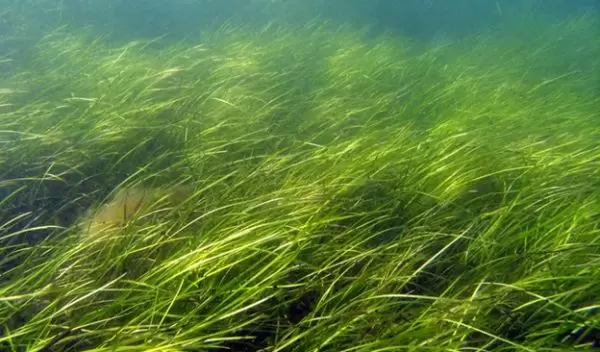
Legacy of ancient ice ages shapes how seagrasses respond to environmental threats today
Deep evolution casts a longer shadow than previously thought, scientists report in a paper published in Proceedings of the National Academy of Sciences. U.S. National Science Foundation-supported scientists looked at eelgrass communities — the foundation of many coastal marine food webs along the north Atlantic and Pacific coasts — and discovered that their ancient genetic history can play a stronger role than the present-day environment in determining their size, structure and who lives in them.
That could have implications for how well eelgrasses adapt to threats like climate change.
About a half-million years ago, when the world was warmer, some eelgrass plants made the journey from their homes in the Pacific to the Atlantic via the Arctic. Not all the plants were hardy enough to make the journey across the Arctic. For those that succeeded, a series of ice ages during the Pleistocene Epoch affected how far they could spread. Those millennia-old struggles left lasting signatures in their DNA. Even today, eelgrass populations in the Atlantic are far less genetically diverse than those in the Pacific.
"We already knew that there was big genetic separation between the oceans, but I don't think any of us ever dreamed that that would be more important than environmental conditions," said Emmett Duffy, a marine biologist at the Smithsonian Environmental Research Center and lead author of the report. "That was a big surprise to everybody."
Eelgrass is among the most widespread shallow-water plants in the world. Its range spans from semi-tropical regions, such as Baja California, to Alaska and the Arctic. In addition to providing food and habitat for many undersea animals, eelgrass offers a plethora of services to humans. It protects coastlines from storms, soaks up carbon and can reduce harmful bacteria in the water.
But in most places where it grows, eelgrass is the dominant — or only — seagrass species present. That makes its survival critical to the people and other animals that live there. The lower genetic diversity in the Atlantic could make it hard for some populations to adapt to sudden changes.
For the new study, the team studied eelgrass communities at 50 sites in the Atlantic and Pacific. With 20 plots sampled per site, the team came away with data from 1,000 eelgrass plots.
After running a series of models, the researchers discovered a host of differences between the Atlantic and Pacific eelgrass ecosystems — differences that closely aligned with the genetic divergence from the Pleistocene migration and subsequent ice ages.
While Pacific eelgrasses often grew in "forests" that regularly surpassed 3 feet tall and sometimes reached more than twice that high, the Atlantic hosted more diminutive "meadows" that rarely came close to that height. The genetic differences also aligned with the total biomass of eelgrass. In the Atlantic, evolutionary genetics and the present-day environment played equally strong roles in eelgrass biomass. In the Pacific, genetics had the upper hand.
